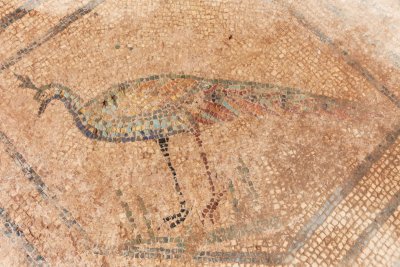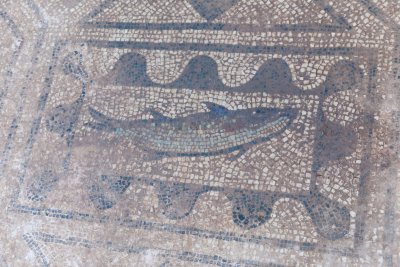A vast mosaic dating back to ancient Rome has been uncovered in Spain, showing the mythical monster Medusa in beautiful detail.
The 323-square-foot mosaic is dotted with fish and peacock motifs, with the depiction of Medusa thought to have been designed to protect locals.
"In a large square in which floral and animal motifs (birds and fish) are interspersed together with masks, the appearance of the image of the Medusa is typical in the mosaic pavements of the [period] as a prophylactic sign or protection of the inhabitants of the domus," José Vargas, an archeology monitor at the Barraeca II Professional School, said in a statement.

"In this excavation, a Roman domus has been brought to light and one of its main rooms completely, paved with a polychrome mosaic of about 30 m2 [323 square feet] whose central motif is represented by the head of a Medusa framed in an octagonal medallion. Four peacocks, embodying the four seasons, are located in the corners within hexagons."
In ancient mythology, Medusa was one of the Gorgons, three sisters who had snakes for hair. Medusa was cursed by Athena, or Minerva as the Romans called her, to turn any living thing that she cast her eyes upon to stone. She was beheaded and killed by the demigod Perseus, who then used her head as a weapon against his enemies.
The mosaic was uncovered by students from the Barraeca II Professional School of the City Council in the Huerta de Otero in Mérida, Spain, which is a hotspot for fascinating archeological finds from the Roman era.
Las excavaciones en la Huerta de Otero sacan a la luz un gran mosaico de Medusa en la estancia principal de una espléndida domus romanaEs el resultado de las últimas excavaciones que vienen...
The excavation of the site began in 1976, but after decades of little work, it was ramped up in 2019, with a concerted effort being made to preserve findings for others to enjoy.
This site "is of an exceptional nature due to the level of conservation of the remains and, above all, due to the ornamental apparatus that decorates the well-preserved house: not only the mosaic of the jellyfish but also paintings and sculptural motifs," Félix Palma, director of the Monumental City Consortium, said in the statement.




Other findings there include a 130-foot-long section of Roman foundation wall measuring 16 feet tall and nine feet wide. The remains of a Roman road were also discovered, running parallel to the wall, dating back to the 4th century A.D.
The students and archaeologists will continue to excavate the site, in the hopes of finding other hidden treasures.
Do you have a tip on a science story that Newsweek should be covering? Do you have a question about Roman mosaics? Let us know via science@newsweek.com.
Uncommon Knowledge
Newsweek is committed to challenging conventional wisdom and finding connections in the search for common ground.
Newsweek is committed to challenging conventional wisdom and finding connections in the search for common ground.
About the writer
Jess Thomson is a Newsweek Science Reporter based in London UK. Her focus is reporting on science, technology and healthcare. ... Read more





